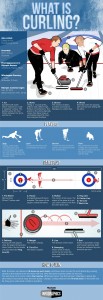First post since 2011
It’s starting to feel like Spring here in Seattle. Lunchtime was pretty great, with a walk over to SLU for some tacos with my co-workers. On the work front, I’ve been spending a good amount of time working on Zenoss monitoring to include sensor data from our cluster of servers. It’s easiest to pull data from the onboard BMC using FreeIPMI, outputting it in a Nagios-friendly format, and ingesting it into Zenoss. At times, I’ve been frustrated by the lack of documentation for rolling your own commands to fetch information, but am pretty happy that after getting the necessary wrapper for ipmi-sensors, the process has been working well. I ended up using a base script offered up by Thomas Krenn and I’ve been happy to use his code with a few patches necessary for our operating environment. Cobbling these sorts of things together in the Open Source world seems much easier than when I was part of a team who used BMC Control-M. In fact, our team had one dedicated staff member responsible solely for system monitoring (configuration, deployment, validation and testing).
Whether for better or worse, this is the first post I’ve made in a very long time. Actually, this is probably the first post I’ve made since 2011, when I found out that my marriage was about to fall apart. I’ve had a lot of personal growth since then, and hope to share a little bit of that in the future. Until then, I’ll talk a bit more about random things, and eventually re-import all my old content back into this site.
I saw that Team Vukich dropped their first game to Scotland today, but used the opportunity to show some coworkers a bit more about curling. It’s interesting to explain the positions (Skip, Third or Mate where I grew up in Nova Scotia, Second, and Lead). Each member of a team throws two stones per end of play. A game is made up of either eight or ten ends, depending on the level of play (Championships usually go ten ends, while league play is eight). Scoring is based on how many stones are closer to the button, which is the smaller circle of the rings. One rock is worth one point when you score. You can score up to eight points in an end, assuming there are no opponent stones closer to the button. The skip chooses the tactics they believe is best suited to either scoring or limiting the scoring of your opponent. There’s this thing called “the hammer”, which sounds ominous — but is really just an indication of who gets the advantage of throwing the last rock of an end. The team who scores in the previous end will always start the next end by throwing the first stone, thus giving the opposition the hammer in that end.
Curling can be complicated, eh? Not really, but I’ve been doing it for about twenty years, and it’s all somewhat second nature to me by now.
This infographic has been making its way around the interwebs lately, and I think it’s pretty good.


Leave a comment